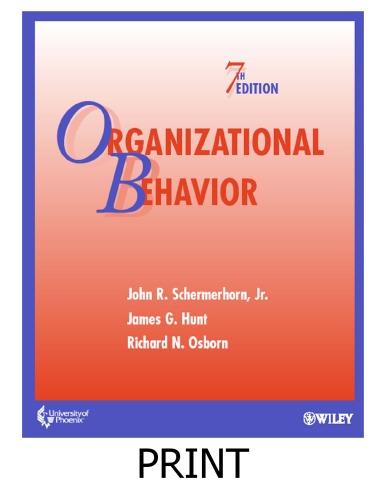Motorola Inc., world famous for its Six Sigma quality control program, was an early success story in
Question:
Motorola Inc., world famous for its Six Sigma quality control program, was an early success story in the computer/electronics age. Motorola moved from being a decentralized but integrated, narrowly focused electronics firm at \($3\) billion in 1980 to being a decentralized and disintegrated broad portfolio firm at \($27\) billion in 1997.1 Motorola is one of the world’s leading providers of wireless communications, semiconductors, electronic systems, components, and services. Its cellular phone and pager products were identified among the very best in the early 1990s. However, increased competition, the Asian economic crisis, and its failure to fully embrace the digital revolution have severely tarnished its operating results and image. Can Motorola return to its high performance ways?
Motorola Inc. was founded by Paul V. Galvin in 1928, as the Galvin Manufacturing Corporation. Motorola’s long history of technological innovation began in the 1930s with the first car radio. Under the brand name “Motorola,” suggesting “sound in motion” the company name was changed to Motorola, Inc. in 1947.2 Being the sound of innovation, it was Motorola’s goal to provide products that would give people the time and freedom to explore new worlds and handle daily tasks in the most efficient way. Motorola represents a large number of firsts, including the first rectangular television picture tube, first practical car radio, pagers, and more. In 1988, Motorola won the first Malcolm Baldridge National Quality Award in recognition of quality in American business. This is the same year that George Fisher (now president of Kodak) became president of the firm; he is credited by many with bringing Motorola into the cellular age. Beginning in 1987, Motorola began the design of IRIDIUM. The system is a satellite-based, wireless communications network. It consists of 66 interconnected, low-orbiting satellites that deliver voice, data, fax and paging through a hand-held phone. The system will simplify communications for business professionals, travelers, residents and other users, permitting them to reach any destination on Earth. Along with Motorola, Sprint and Iridium Canada are contributing to the development of IRIDIUM system to the North American continent. The development of IRIDIUM will provide customers with highquality service at a reasonable rate. As Motorola continued to expand its worldwide presence in the global marketplace through products and services, the need for talented personnel to uphold these established standards has increased. In recognition of this essentiality, Motorola has demonstrated a high commitment to seeking and developing a broad base of knowledgeable, highly trained employees, evident through their innovative training programs, through the establishment of Motorola University, and through the offering of expansive benefit plans to all associates.
In the early 1990s, Motorola was recognized as a true high performance organization with its innovations and socially responsible corporate attitude. Indeed, its organizational culture is identified as a source of competitive advantage for the firm. Working in quality teams, members strive to provide the highest level of customer satisfaction, measuring defects in incidents per billion. Motorola earmarks more than \($100\) million a year for training, with everyone in the organization, however humble, spending at least a week a year back in the classroom at Motorola University, courtesy of the company. Motorola lists its fundamental objective as total customer satisfaction: “To serve every customer better than our competitors do with products and services of excellent value and quality, and thereby earn continued enthusiastic trust and support.” It wishes to accomplish this objective with respect for the individual, a statement it makes clear in its shared beliefs.
Review Questions
1. Discuss Motorola’s relative success at the two functions/components of organizational culture discussed by the author.
2. Compare the various levels (observable, shared values, and common assumptions) of corporate culture at Motorola.
3. Discuss the various options managers might use in attempting to change the culture at Motorola.
Step by Step Answer:

Organizational Behavior
ISBN: 9780470076255
7th Edition
Authors: John Schermerhorn, James G. Hunt, Richard N. Osborn





